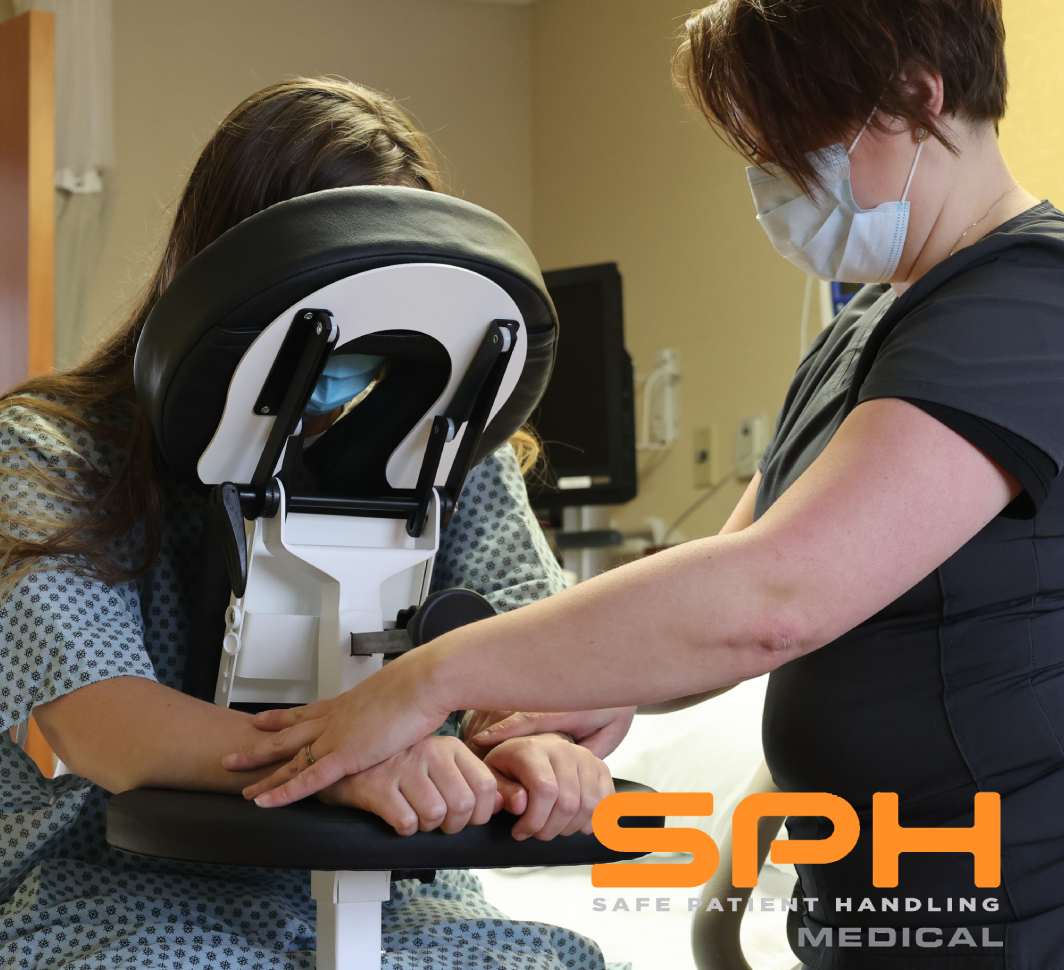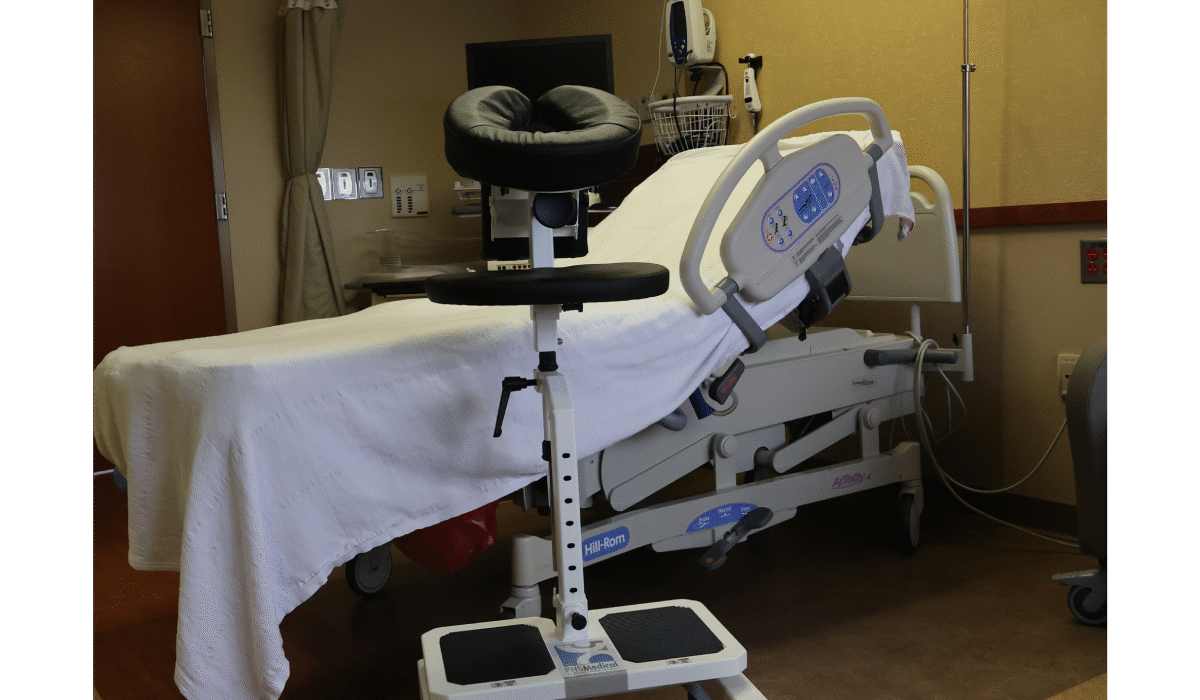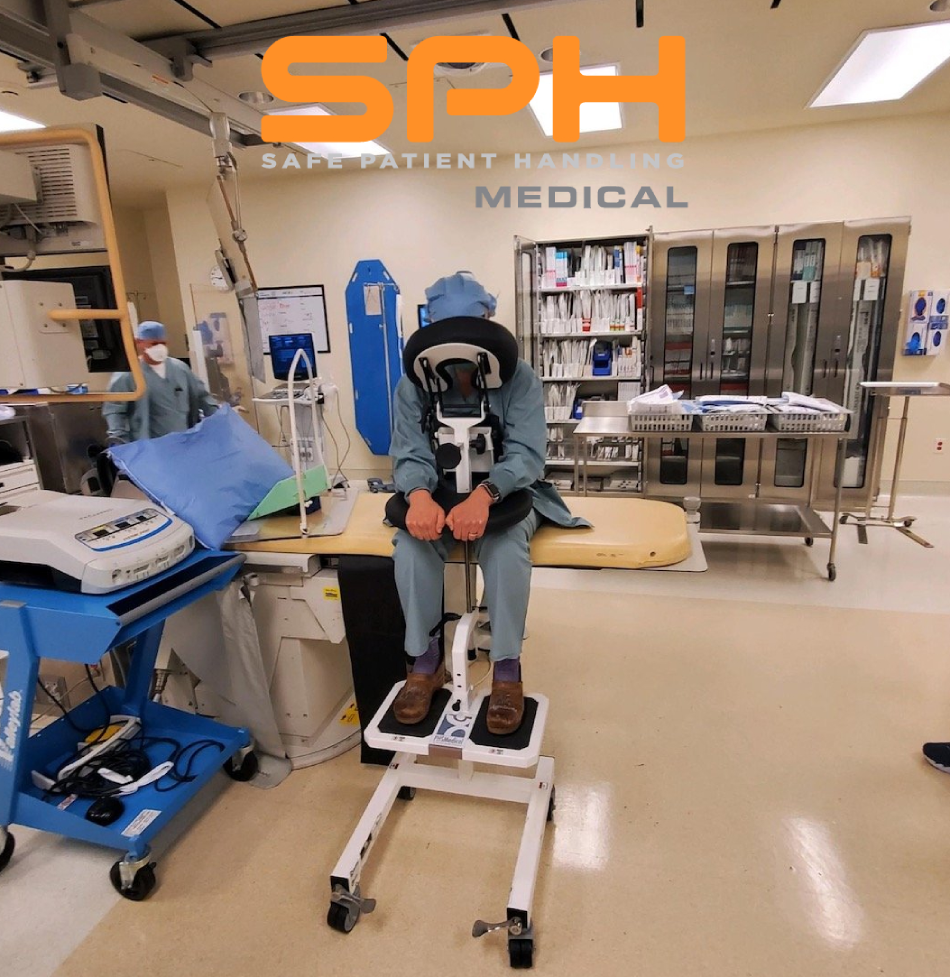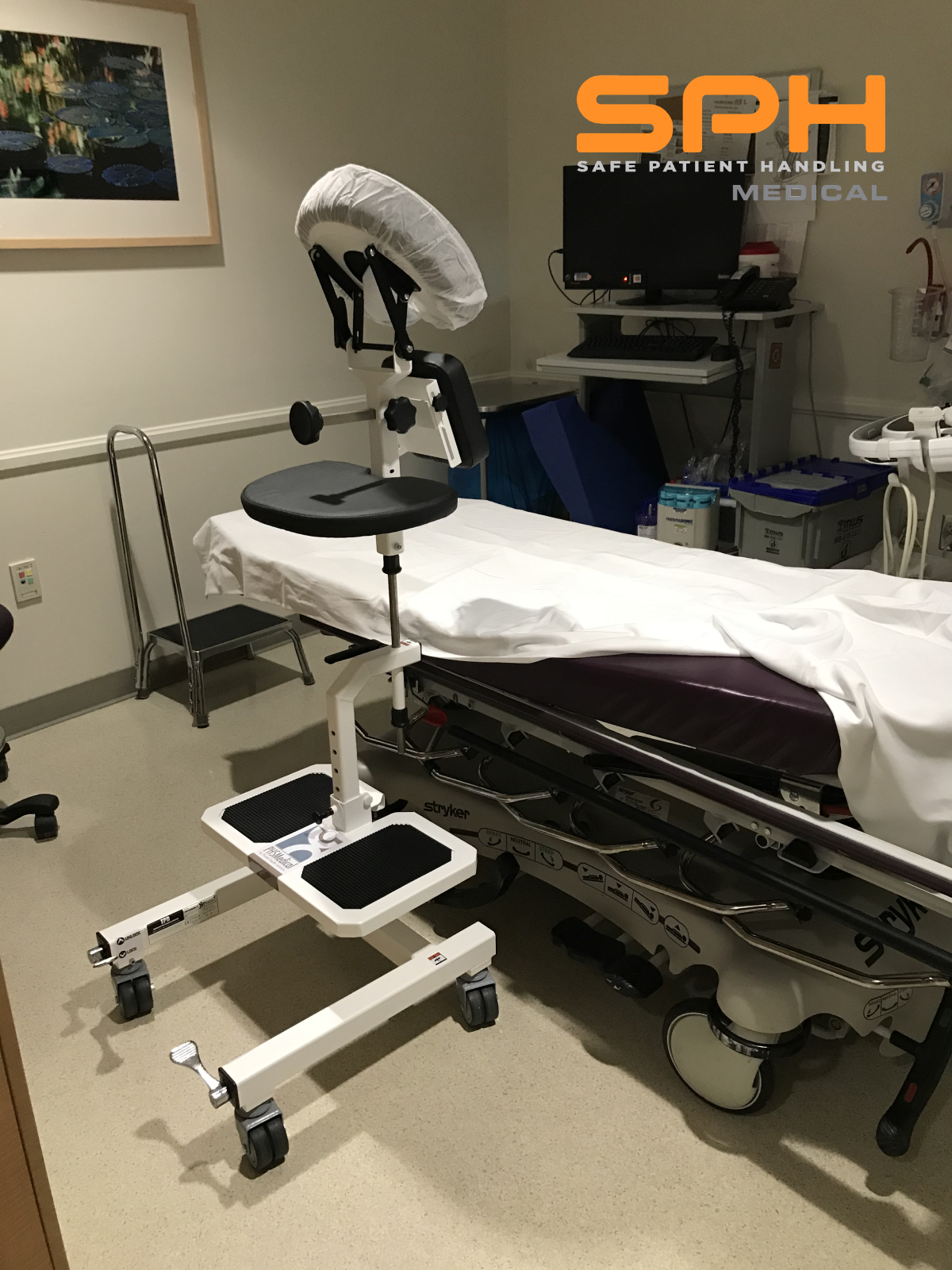The EPD’s Role in Thoracentesis Safety
Thoracentesis procedures require patients to maintain a difficult, forward-leaning position. Maintaining this position often leads to instability and placing significant physical strain on nursing staff who must manually support them. This scenario presents a dual risk. First, patient safety can be compromised by sudden movements. Second, caregivers are exposed to a high risk of musculoskeletal injury. The innovative application of the Epidural Positioning Device (EPD), traditionally used for spinal anesthesia, offers a superior solution for supporting patients during thoracentesis.
This article explores how this versatile device enhances patient stability. This article also dives into how the EPD improves procedural accuracy, and crucially, reduces the risk of injury for hospital staff. The EPD represents a pivotal advancement in Safe Patient Handling (SPH) by providing a secure, ergonomic, and hands-free solution for complex procedural positioning. It is a comprehensive tool that directly addresses staff safety and patient outcome goals.
The Dual Challenge of Thoracentesis Positioning
Performing a thoracentesis involves navigating significant risks for both the patient and the clinical team. The need for a specific patient posture creates a situation where safety can be easily compromised.
The Risk to Patient Safety and Procedural Success
The required forward leaning “tripod” position is inherently difficult for many patients to maintain. For elderly, frail, or bariatric individuals, holding this posture without support is uncomfortable and often impossible for the duration of the procedure. This instability is a major concern. Any sudden patient movement can compromise the sterile field, damage surrounding tissue, and increase the risk of serious procedural complications, such as a pneumothorax. Patient comfort and stability are not just matters of satisfaction; they are directly linked to clinical success.
The Unseen Burden on Healthcare Staff
When a patient cannot hold the position independently, the responsibility falls to the nursing staff. Manually supporting a patient, sometimes for extended periods, places an immense physical burden on caregivers. According to OSHA, healthcare workers are at an extremely high risk for musculoskeletal injuries (MSIs) from manual patient handling. The sustained, awkward posture required to hold a patient during thoracentesis can lead to career-altering back and shoulder injuries, contributing to lost workdays and burnout. This manual approach is a clear violation of modern SPH principles.
The Innovative Solution: Applying the Epidural Positioning Device
The EPD offers a simple, effective, and innovative solution to this long-standing problem. By repurposing this proven technology, facilities can transform thoracentesis from a high-risk procedure into a safe and controlled one.
What is the Epidural Positioning Device?
The EPD is a fully adjustable positioning aid designed to securely support a patient’s torso, head, and arms in a flexed, forward-leaning posture. Originally developed to provide stable positioning for epidurals and spinal blocks, its design is perfectly suited for other procedures requiring similar posture. Key features include locking wheels for stability, an adjustable chest and face cradle for customized support, and secure armrests. It mechanically holds the patient in the ideal position, freeing the caregiver from the task.
Why It’s the Gold Standard for Thoracentesis
The EPD is the gold standard for thoracentesis because it perfectly mimics and secures the ideal patient position without any need for manual holding by staff. It provides unwavering stability, allowing the practitioner to focus entirely on the procedure with an immobile patient. This hands-free positioning ensures the patient remains stable and comfortable, which directly enhances procedural accuracy and reduces the likelihood of complications. The device essentially creates the perfect clinical environment for success.

The Compounding Benefits of a Safer Procedure
Integrating the EPD into procedural workflows provides compounding benefits that align with key performance indicators for safety and efficiency.
Revolutionizing Staff Safety and Workflow
The most significant benefit for staff is the complete elimination of manual holding. This directly aligns with national Safe Patient Handling standards from the ANA and AORN, which advocate for the use of technology to eliminate high-risk manual tasks. By using the EPD, facilities candramatically reduce the risk of debilitating back and shoulder injuries among their nursing staff.
This also leads to improved workflow efficiency. A task that once occupied one or two staff members for the entire duration of the procedure can now be managed by a single person who sets up the device. This frees up valuable clinical staff to perform other critical duties, improving departmental productivity.
Maximizing Patient Safety, Comfort, and Dignity
For the patient, the advantages are equally compelling. The stable, ergonomic support provided by the EPD improves comfort and significantly reduces the anxiety associated with the procedure. A stable patient is a safe patient. By minimizing the risk of sudden movements, the EPD contributes to better clinical outcomes and fewer complications. Furthermore, being supported by a piece of medical equipment rather than being physically held by staff members enhances the patient’s sense of dignity and autonomy.
The application of the Epidural Positioning Device for thoracentesis procedures is a powerful example of innovative thinking in patient care. The EPD transforms a high-risk task into a safe, stable, and efficient process. Importantly it providies standardized solution that protects both patients and invaluable hospital staff. By embracing this technology, facilities make a clear commitment to a culture of safety, directly addressing the well-being of their caregivers while simultaneously improving patient outcomes.
Elevate your facility’s commitment to a culture of safety. Contact SPH Medical to discover how the versatile Epidural Positioning Device can be integrated into your procedural areas to reduce injuries and improve patient outcomes.




